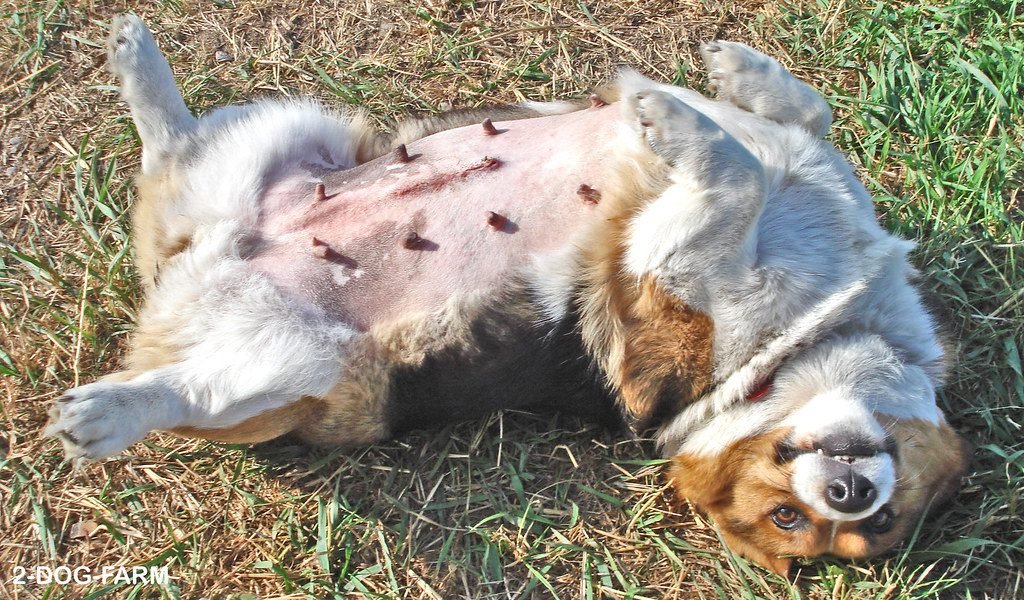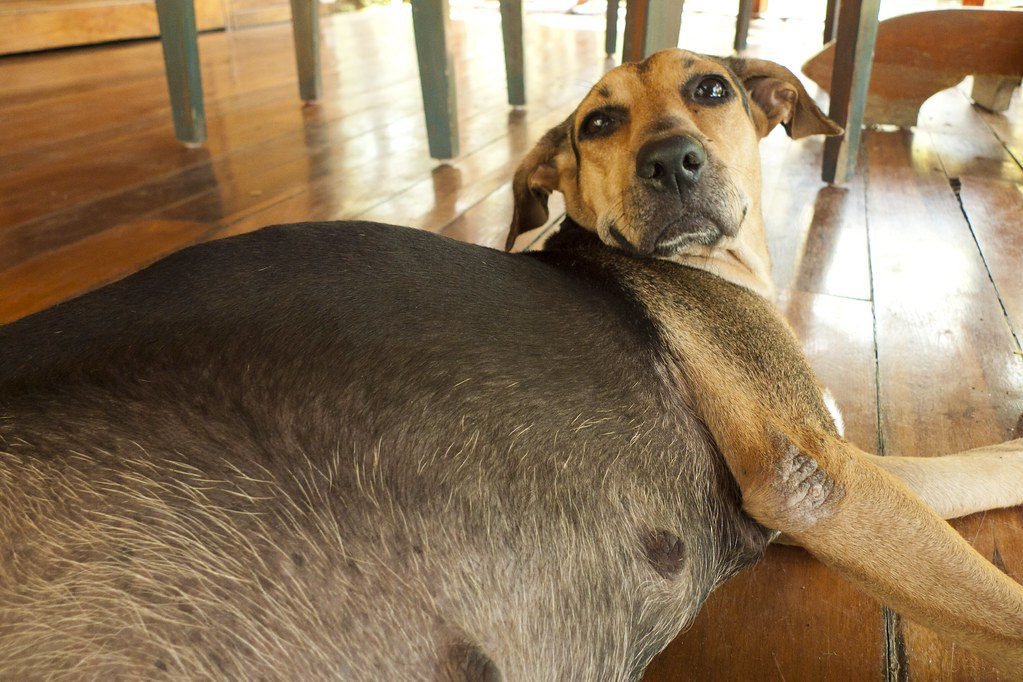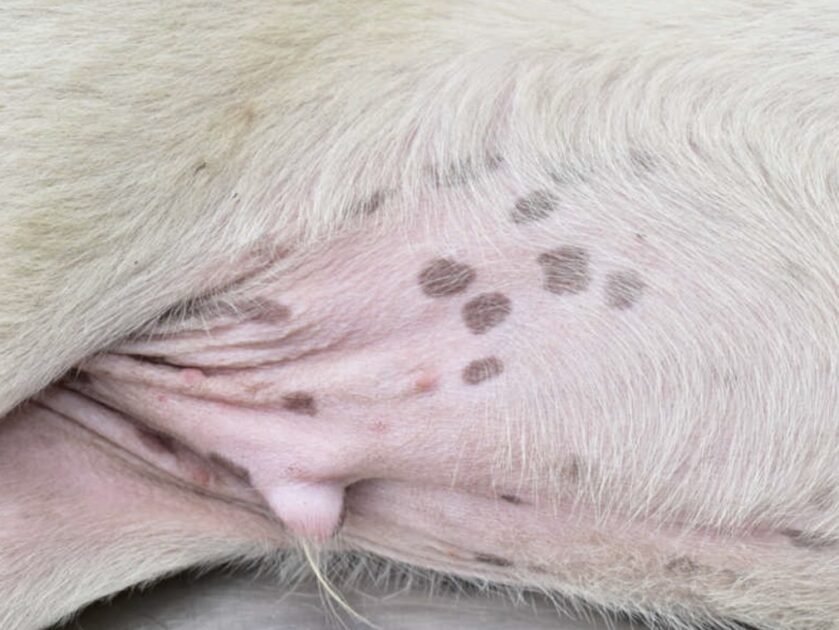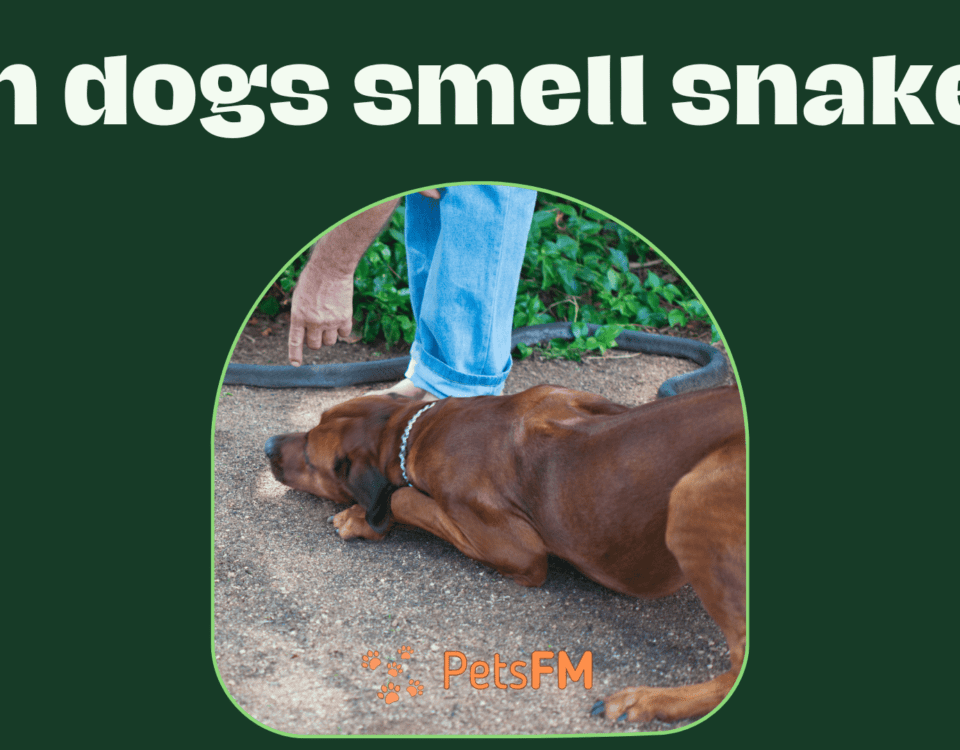


How soon can a dog get pregnant after giving birth? Updated 2024
January 3, 2024![Dog Walking Slowly With Head Down? [Reasons & How To Address]](https://petsfm.com/wp-content/uploads/2024/01/Dog-Walking-Slowly-With-Head-Down-Reasons-How-To-Address-150x150.jpg)
![Dog Walking Slowly With Head Down? [Reasons & How To Address]](https://petsfm.com/wp-content/uploads/2024/01/Dog-Walking-Slowly-With-Head-Down-Reasons-How-To-Address-150x150.jpg)
![Dog Walking Slowly With Head Down? [Reasons & How To Address]](https://petsfm.com/wp-content/uploads/2024/01/Dog-Walking-Slowly-With-Head-Down-Reasons-How-To-Address-150x150.jpg)
Dog walking slowly with head down? [17+ Reasons & Solutions]
January 4, 2024Our beloved dogs sometimes display an array of unique fur markings, shades, and designs. However, when pet owners notice brown spots resembling dirt on their dog’s belly, it can lead to worry and intrigue.
This detailed guide delves into the possible reasons for these enigmatic brown spots, discusses related issues, and offers advice on appropriate care and prevention strategies.
Brown markings on dogs’ skin with naturally spotted coats are typically normal. However, such spots can also arise due to aging and sun exposure. Additionally, various factors like parasites, yeast infections, bacterial infections, and underlying health conditions, including cancer, Cushing’s disease, or Addison’s disease, can lead to the development of brown spots or hyperpigmentation on a dog’s skin.
12 Reasons Behind Brown Spots On Dogs Belly That Look Like Dirt
Let’s examine the 12 primary reasons for brown spots, freckles, and changes in dog skin pigmentation.
1: Hyperpigmentation
Hyperpigmentation in dogs occurs when their skin becomes irritated and inflamed over an extended period, leading to brown, reddish-brown, or black spots.
This condition, characterized by an increase in melanin, can affect single or multiple body areas. The skin often becomes thicker and rougher, or sometimes velvety, a process known as lichenification.
Commonly, hyperpigmentation arises around areas inflamed due to bacterial or fungal infections, such as ringworm, or parasitic infestations like scabies. It’s also associated with underlying health conditions.


Dog’s Belly Brown Spots
A typical example is the leathery calluses on large dogs’ pressure points, like elbows, which are large, dark, hairless, and often have ingrown hairs.
Chafing or friction from poorly fitting harnesses can also cause hyperpigmentation. It’s essential to ensure a proper harness fit and check areas prone to chafing, such as armpits or skin folds.
2: Natural Freckles On Specific Dog Breeds
Natural skin pigmentation, like human freckles or birthmarks, is a common cause of brown spots in dogs. These spots are more prevalent in dapple, spotted, ticked, harlequin, or merle coat breeds, such as Dalmatians, English Setters, and Australian Shepherds.
Most dogs, even those with predominantly black or brown fur, may exhibit these brown spots on lighter areas of their skin, including the belly, chest, and paws.
3: Sun Exposure
Sun exposure can lead to the formation of spots in dogs that differ from age spots. These sun-induced spots can appear in dogs of any age, particularly those with pink skin and sparse fur, making them highly susceptible to sunburn. Such dogs require daily sunscreen application, similar to easily sunburnt people.
However, it’s common to overlook the sunbathing habits of dogs, especially in winter, when the sun can cause the most damage. White or pale-colored dogs often develop dark spots on their belly, lips, ears, or other exposed areas over time. It’s crucial to watch these spots, as they may potentially evolve into skin cancer.
4: Fungal Infections
Yeast infections are a prevalent cause of brown spots on a dog’s skin. These infections might initially resemble flea dirt, making them hard to detect early. If you’re searching for “brown spots on dogs belly looks like dirt,” a yeast infection could be the culprit.
Typically, yeast infections begin as tiny black, brown, or reddish-brown specks on the belly, genitals, or under the armpits. Over time, they can evolve into larger patches of a reddish-brown rash.
5: Vitiligo
In rare cases, dogs can develop vitiligo, a condition where they lose pigment. This is often seen in a specific area, such as the nose, commonly called “snow nose.”
However, vitiligo can also affect other skin parts, leading to the loss of pigment patches and leaving a network of brown or dark spots.
This condition can occur due to genetic factors or an autoimmune disease targeting the cells responsible for pigment production.
6: Spots Due To Aging
As dogs get older, they commonly develop brown or dark spots, often called age spots. These spots typically appear on areas with less fur, such as the ears, belly, and nose. Breeds with little to no hair are likelier to develop age spots across their bodies.


Pregnant Dog
Monitoring these spots for any shape, size, or texture changes is essential. Generally, age spots are areas where the skin has accumulated more melanin, similar to how fair-skinned humans develop them.
7: Parasites
Parasites are another common cause of dark spots on dogs. Various spots can be expected on a dog’s skin, whether from flea dirt, bites, scabs, or marks from tick bites. Additionally, it’s essential to check for mites, as they can lead to hyperpigmentation.
8: Allergies
Skin color changes under a dog’s fur are often linked to skin allergies. Dogs may develop contact dermatitis from materials like specific collars, flea bites, or environmental allergies to pollen or dust mites. Food allergies, especially to common proteins like chicken, beef, or soy, can cause itchy skin.
Testing for allergies is essential, as there’s no universal hypoallergenic diet. Constant scratching can lead to secondary infections and hyperpigmentation, resulting in brown or black spots.
9: Bacterial Infections
Brown spots on dogs can result from various bacterial infections, collectively known as “pyoderma.” This term encompasses skin fold infections, puppy impetigo, and hot spots.
Pyoderma typically causes skin discoloration, often red but also leading to hyperpigmentation and dark spots, and is accompanied by other symptoms like black scabs.
The most frequent type of pyoderma is a staph infection, which in canines often appears as hard red bumps (folliculitis) or pus-filled lesions resembling pimples.
On the chin, this manifests as dog chin acne. It can also create round areas of hair loss with a red, brown, or black spot (either an open lesion or a scab) in the center and a crusty edge.
10: Medications
Hyperpigmentation in dogs can also be a side effect of certain medications. Notable examples include:
- Mitotane
- Cabergoline
- Ketoconazole
- Minocycline
These drugs, used for treating different conditions, can sometimes lead to changes in skin coloration in dogs.
11: Cancer
It’s crucial to closely monitor any unusual pigmentation or growths, such as dog skin tags. Similar to how sun exposure and aging can lead to spots, they can also cause melanomas.
Dogs are susceptible to various types of skin cancer. Be vigilant for symptoms like raised warts, persistent sores or scabs that don’t heal, strange lumps, and any changes in pigmentation, including the development of black spots.
12: Endocrine Disorders (Other than Cushing’s and Addison’s Disease)
Conditions like thyroid dysfunction can affect skin pigmentation. Hypothyroidism, for example, may cause skin thickening and darkening.


13: Underlying Hormonal Or Immnual Condition
Brown spots on a dog’s skin can sometimes indicate serious health issues, often related to the immune or endocrine (hormonal) systems.
If you notice significant changes in your dog’s skin, getting a veterinary check-up and requesting blood work is crucial. Conditions like hypothyroidism and diabetes should be ruled out. Thyroid issues are a significant cause of brown spots on the skin.
Hypoadrenocorticism (Addison’s disease) can lead to hyperpigmentation and is frequently overlooked. It’s relatively rare but more common in young female dogs. Dark spots on the skin accompanied by hair loss, particularly in female dogs, should prompt an adrenal gland function check.
Conversely, hyperadrenocorticism (Cushing’s disease) often results in skin discoloration and other skin issues, so testing for both Addison’s and Cushing’s is advisable.
Additionally, autoimmune disorders like Lupus can cause loss of pigment around the nose in dogs.
14: Post-Inflammatory Hyperpigmentation
This occurs after skin injury or inflammation from conditions like hot spots, wounds, or chronic scratching. Once the underlying issue is resolved, the dark spots may persist for some time.
Also, Read: How soon can a dog get pregnant after giving birth? Updated 2024
When Should You Seek Medical Attention?
While brown spots on dogs are often harmless, it’s essential to remain alert and seek veterinary care if these spots are associated with problematic symptoms. Key signs that call for a visit to the vet include:


- Behavioral Changes: Unusual behavior, lack of energy, or signs of discomfort in your dog might be symptoms of a deeper health issue that requires a professional diagnosis.
- Itching or Discomfort: If your dog persistently itches, licks, or scratches around the belly area, this could indicate an underlying skin condition that needs medical attention.
- Alterations in Spot Appearance: Should there be any changes in the size, shape, color, or texture of the brown spots, or if new symptoms appear, it’s essential to get your pet evaluated by a veterinarian.
- Bad Smell: A foul odor from the brown spots could be a sign of infection, making it essential to have your dog checked by a vet.
Diagnostic Approach
To identify the cause of brown spots on a dog’s belly, veterinarians typically use a range of diagnostic methods:
- Physical Examination: This involves a comprehensive check of the dog to observe the spots’ appearance, texture, and specific location.
- Skin Scraping: This procedure detects mites or other external parasites, especially if a parasitic infection is suspected.
- Blood Tests: These tests are crucial for measuring hormonal levels and identifying underlying conditions, such as Cushing’s disease.
- Allergy Testing: When allergies are a suspected cause, allergy tests can help pinpoint the allergens causing the skin discoloration.
- Cytology: It involves studying cell samples from the affected skin to detect any infections or cellular abnormalities under a microscope.
Breed-Specific Susceptibility to Skin Issues
- Dalmatians and English Setters: Known for their distinct spots, these breeds are prone to melanoma and other skin cancers. Regular checks for changes in spot size or color are important.
- Bulldogs and Shar-Peis: Wrinkled breeds often struggle with skin fold dermatitis. Proper grooming and cleaning of skin folds help prevent bacterial and yeast infections.
- Labrador Retrievers: Commonly develop allergies that can lead to atopic dermatitis. Maintaining a hypoallergenic diet and regular baths can mitigate symptoms.
- Boxers: Susceptible to mast cell tumors, which can appear as small, brown spots. Early detection and veterinary consultation are crucial for treatment.
- German Shepherds: Prone to autoimmune skin diseases like lupus. Symptoms include depigmentation and lesions, especially around the nose and eyes.
- Cocker Spaniels: Often suffer from seborrhea, leading to scaly skin and pigmentation changes. Regular vet check-ups and specific shampoos can manage this condition.
- Schnauzers: Vulnerable to comedone syndrome, characterized by blackheads and skin bumps, particularly along the back. A diet rich in fatty acids and regular grooming can help.
Brown Spots vs. Other Skin Anomalies
- Brown Spots:
- Often related to hyperpigmentation or natural pigmentation in certain breeds.
- Commonly seen in older dogs or those with frequent sun exposure.
- May be flat and smooth, similar to freckles in humans.
- Can be a sign of underlying issues like hormonal imbalances or allergies.
- Regular monitoring for changes in size, color, or texture is important.
- Skin Lumps/Bumps:
- Can indicate benign growths like lipomas or more serious conditions like tumors.
- Usually raised and vary in size and hardness.
- Should be checked by a vet, especially if they grow rapidly or change in texture.
- Rashes:
- Often associated with allergies, infections, or parasites.
- May appear as red, inflamed areas and can be itchy.
- Usually requires veterinary intervention for diagnosis and treatment.
- Scabs or Crusty Skin:
- Can result from wounds, infections, or parasitic infestations.
- Indicates a healing process or an ongoing skin problem.
- Veterinary assessment is necessary if persistent or widespread.
- Hair Loss (Alopecia):
- Can be caused by a range of factors including stress, hormonal imbalances, or parasites.
- Usually involves patches of skin with thinning or no hair.
- Requires veterinary diagnosis to determine the underlying cause.
- Dry, Flaky Skin:
- May be a sign of nutritional deficiencies, allergies, or skin infections.
- Often accompanied by itching and discomfort.
- Improving diet and skincare routine can help, along with veterinary advice.
Editor’s Pick: Do’s and Don’ts of Scruffing Your Dog: A Comprehensive Guide
How To Eliminate Brown Spots On Dog’s Belly?
To effectively treat brown spots on a dog’s belly, it’s crucial to target the root cause of the issue. Here are some potential treatment approaches:
- Topical Treatments: For conditions like skin infections or allergies, veterinarians often prescribe topical solutions, such as medicated shampoos or ointments.
- Oral Medications: If the brown spots are due to systemic issues like allergies, oral medications like antihistamines or antibiotics might be necessary.
- Parasite Control: Should parasites be the cause, a comprehensive plan to eradicate the infestation, including treatments like flea and tick preventatives, will be required.
- Hormonal Management: Hormone-related disorders may necessitate specific medications or treatments to correct the imbalance.
- Dietary Adjustments: In cases of suspected food allergies, a dietary change, including potentially hypoallergenic food options, might be recommended to alleviate the symptoms.


Care And Maintenance
To help maintain your dog’s skin health and reduce the risk of developing brown spots, consider these preventive care strategies:
- Regular Grooming: Keeping your dog well-groomed is vital. This maintains their skin and coat health and allows for early detection of any unusual changes, such as the emergence of brown spots.
- Balanced Diet: Ensuring your dog eats a well-balanced, nutritious diet is fundamental for their overall well-being, including their skin and coat health.
- Parasite Prevention: Establishing a consistent parasite prevention routine, particularly for flea and tick control, is essential to lessen the chances of parasite-related skin issues.
- Allergen Management: If allergies are a concern, identify and control potential allergens in your dog’s environment. This may include making dietary changes if food allergies are suspected.
- Sun Protection: For dogs that spend a lot of time outdoors, it’s essential to provide adequate shade or use pet-friendly sunscreen to protect their belly and other exposed areas from too much sun exposure.
Next Read: Learn the Causes of Sagging Nipples in Dogs | Updated 2024
Conclusion
The appearance of brown spots on a dog’s belly, which may look like dirt, can be caused by various factors, from normal skin pigmentation to more severe health concerns.
While many causes are harmless and don’t require treatment, some require immediate veterinary care. As engaged pet owners, it’s essential to be aware of these potential causes, stay alert to any worrisome signs, and seek professional guidance when necessary.
By practicing preventive care, scheduling regular veterinary visits, and intervening promptly when issues arise, we can play a vital role in maintaining the health and happiness of our cherished canine friends.



